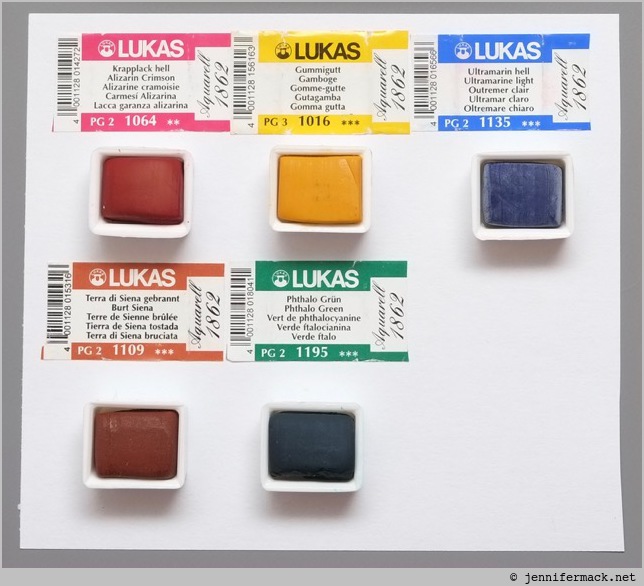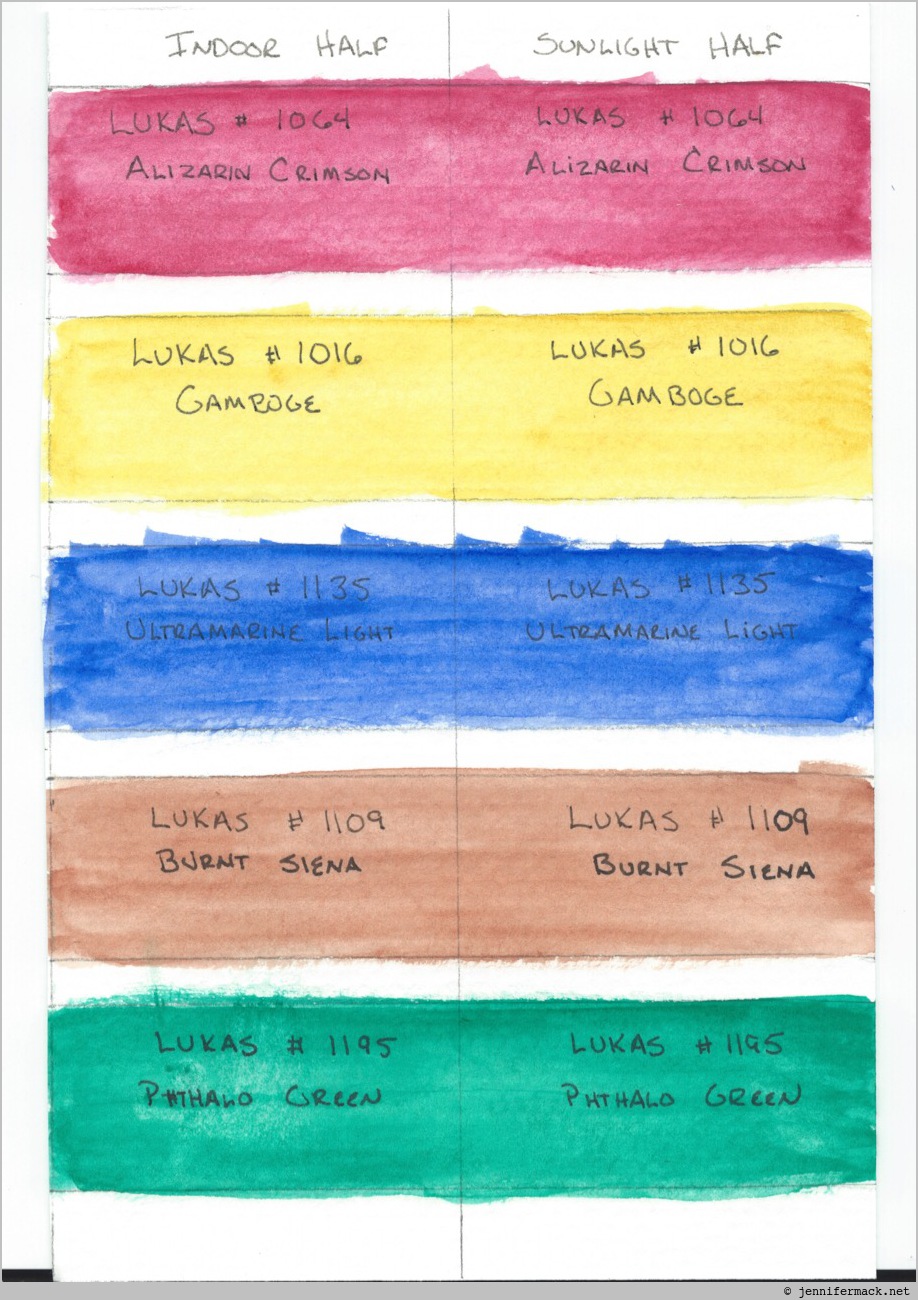Lightfast Test: Lukas Aquarelle 1862 vs. Arizona Sunlight
Lukas Aquarelle 1862 watercolors are a european brand that is sold in North America by Jerry’s Artarama. Being a low-priced paint, I wondered about the quality of the pigments. So I decided some testing was in order.
I bought the following five paints: Alizarin Crimson (1064), Gamboge (1016), Ultramarine Light (1135), Burnt Sienna (1109), and Phthalo Green (1195), in half pans in a Jerry’s store. I have no idea how long they were sitting on the shelf or when they were made. I got the last of the yellow, blue, and brown. So either those are popular colors or they don’t get restocked regularly. I didn’t think to ask about it.
My goal was to build my Altoids tin watercolor kit without breaking the bank. I wanted to get the kit together and see how it traveled before putting a lot money into it.

Once that was done, I made a test panel for the south-facing window.
The paints are at pan strength, and applied to Strathmore 400 watercolor paper. The labeling was done with a technical pen filled with india ink. I wrote the paint information1 before I painted the test strips, so I could check the transparency of each color.

Overall, the paints went on smoothly and seemed to carry an acceptable pigment load.
All of the paints have the highest lightfast rating (★★★) except for Alizarin Crimson (★★).
The next step was to cut the card in half! Then I taped the sunlight half to a south-facing window. The indoor half will be kept in complete darkness (inside of an old sketchbook) and away from even room light.
If you didn’t know, Arizona is where most major car makers do heat and fade resistance testing on their new models. We’re known for our brutal sun and extremely low humidity. The lack of meaningful humidity makes the summer heat bearable, but it will suck the life out of plastic. Most non-automotive plastic left the sun will become brittle very quickly. Other materials don’t do much better. I’ve seen plywood come apart and shed because the heat disintegrated the glue holding it together.
The Plan
The hardest part of this will be to just leave the damned things alone. I plan to take down the sunlight half on a regular schedule and rescan it next to the indoor half to check it’s lightfastness.
I put the test strip in window on the evening of January 19, 2016 (the 20th will its first day of sun), and plan to take it down for rescans on the following dates:
- First check: one week, January 27, 2016
- Second check: one month, February 27, 2016
- Third check: two months, March 16, 2016
- Fourth check: three months, April 13, 2016
Once those are done I’ll decide if more testing is worthwhile.
A note about scanning
I’m scanning the test strips without color correction or any adjustment other than reducing the size for posting here. It may not be perfectly accurate, but it will be consistent. All the future scans will done with the same settings (600 dpi, no correction) so the comparisons will be valid.
I’ll make the original scans available for download at some point. Probably after the third month or so.
First follow up, next week!
- And I still can’t spell “phthalo” without double checking. Right now the mnemonic is “fake F, tee, halo.” Notice the screw up in the bottom left box. ↩︎
